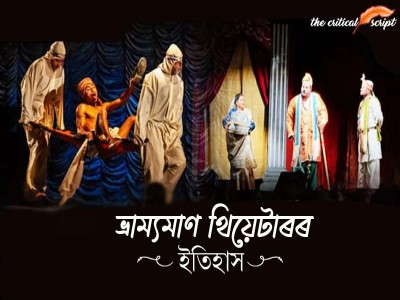
Puppet Dance (Putola Naach) an Assamese Folklore
India
is the birthplace of various folk cultures and traditions that have been passed
down from ancient times to the present day. Although early humans were
illiterate, the knowledge they gathered from their experiences was preserved in
their memory and passed on to society through verbal and physical behavior.
These kinds of preserved and advertised subjects are folk culture, which is the
collection of traditional dances, dramas, songs, etc. These traditions have
been continued from one generation to another and have reached their present
stage.
Among
these traditional folk cultures, puppet dance is the oldest folk theater in
India. Puppet dance in India is first mentioned in the epic Mahabharata in the ninth
century BC. Panini, the Sanskrit grammarian of the fourth century BC, and
Patanjali, the author of the Yugasutra, mentioned puppets in their works.
Thiruvalluvar, a Tamil poet of the second century BC, also wrote that- 'the
movements of an insensitive person are like the life of a puppet moved by a
thread'
There
is no reliable way to know how ancient puppet dance or putola naach has been in
Assam. However, the mention of puppets in the Adi Dasha of Mahapurusha
Sankaradeva suggests that this ritual date back to before the Sankari era. The
traditional yarn dolls in Assam are made with the help of ‘kuhila’. The doll is
wrapped in sticky clay, dung, cloth, etc., and dressed in clothes and ornaments
according to the character of the doll. Bows, arrows, mustaches, etc. are also
made as needed. A person behind the background cloth ties black thread around
the hands, feet, waist, and head of the dolls and controls the dolls from the
inside.
Puppet
dance usually takes the stories of the Ramayana, Mahabharata, and Puranas as
their narratives or storylines. In addition to these, various social, economic,
and other topics are also being covered for social awareness.
Over
the past fifty years, puppet dance in India has been reshaped through the
application of new techniques. There have been some changes in the dance. This
change is a good sign to keep the puppet dance art alive in Assam. Therefore,
it is necessary to take measures to ensure that puppet dance is not only a
means of entertainment but also a means of education and livelihood.
Puppet
dance is studied in theory in the Departments of Anthropology, Departments of
Folk Culture Research, Departments of Assamese, Departments of Mass
Communication and Journalism in various universities of Assam. There is a need
for the youth to apply new ideas and techniques to revive this folk art of
Assam.
Disclaimer: The opinions expressed in this article are those of the author's. They do not purport to reflect the opinions or views of The Critical Script or its editor.

Newsletter!!!
Subscribe to our weekly Newsletter and stay tuned.

















Related Comments